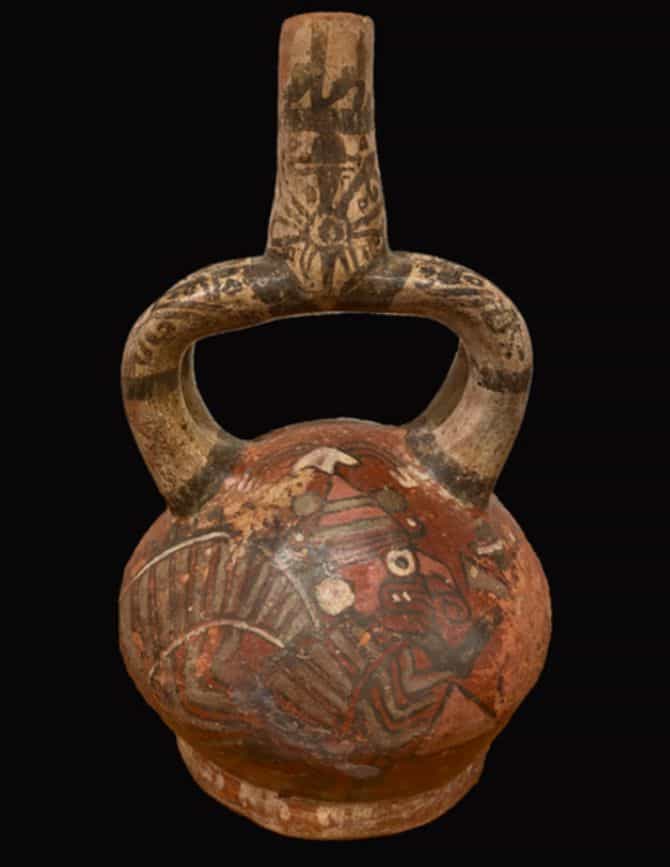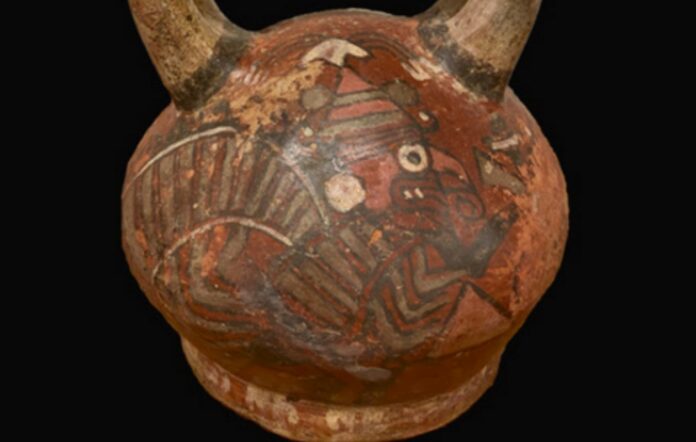The use of color is a significant factor in our daily lives – the shades we choose to wear and decorate with often communicate our identity, origin, and values. This has been a long-standing tradition, as evidenced by a recent study in the Journal of Archaeological Science: Reports.
The study analyzed the colors present on various pieces of ancient Peruvian pottery and revealed that potters throughout the Wari empire utilized a consistent and bold black pigment in the creation of ceramics utilized in sacred rituals.
This uniformity is a testament to the widespread influence of the Wari empire, which extended across the highlands and coastal areas of Peru between 600-1050 CE.
“People sometimes think of the Inka as the first big empire in South America,” says remarks corresponding author Luis Muro Ynoñán, “but the Wari came first.”
There is no written record of the Wari (or at least a system similar to the one we use now).
Because they didn’t employ writing, Muro Ynoán argues that material culture, like as pottery, would have been a crucial tool for conveying political and social ideas.
“The visual impact of these objects would have been super powerful.”
Even little things, such as choosing the proper shade of a hue, might assist signal an object’s status and legitimacy as a member of the empire.
“I remember seeing some of these Wari-influenced pots as an undergraduate archaeology student in Peru, they’re fascinating,” adds Muro Ynoñán. “The rich black color on them is very distinctive, I’ve been obsessed with it for years.”
With his postdoctoral job at the Field Museum, Muro Ynoán had the opportunity to finally go deep into his fascination with the pigment.

Focusing on the chemical composition of the black pigment, he and his co-authors, including Donna Nash, adjunct curator at the Field and associate professor and head of anthropology at the University of North Carolina Greensboro, investigated pottery from diverse places under Wari influence.
Several of the Wari pots analyzed in the research contained black pigment produced from rocks containing the element manganese, however the specific composition of the pigments differed from site to site.
Muro Ynoán explains, before to the arrival of the Wari, some of the northern Peruvian sites employed a different formula for black including iron- and calcium-rich minerals, but once the Wari seized control, they shifted to manganese-based methods.
The authors speculate that the Wari empire may have exercised some type of “quality control” over the pottery made in various places as a result of the transition, maybe even by providing artists with the “correct” black pigment.
“In general,” according to Muro Ynoñán, “black minerals are relatively easy to obtain from the valleys we looked at.”
According to Muro Ynoñán, not all black minerals were suitable for the official Wari aesthetic. He suggests that artisans may have been provided with manganese-bearing minerals from the Wari capital to achieve the desired shade of black. Despite the slight variations in color, the use of “Wari black” may have held significant symbolic significance.
“In general in the Andean region, the color black is related to the ancestors, to the night, to the passage of time. In Wari times, the color was likely important for imposing a specific Wari ideology to the communities they conquered.”
Whilst the use of bright colors on Wari pottery may be indicative of imperial power, each region’s ceramics nonetheless reflect its own culture.
According to Muro Ynoán, “local potters had a lot of flexibility in producing hybrid material culture, combining the Wari imperial style and decoration with their own.”
Black pigments, which the Wari empire controlled and circulated via its imperial commerce routes, were used to unify the ceramics, but from that point on, artists were free to add their own distinctive touches.
Nash, the co-author of the study, hopes that people will recognize that the exquisite artifacts displayed in museums were created by skilled and intelligent individuals who utilized specific technologies to achieve their objectives.
Moreover, these artisans shared knowledge and made choices, sometimes employing different methods to achieve similar outcomes, such as producing decorative patterns on a pot.
These differences in approach may have persisted due to factors such as social class or economic status, but may also reflect a willingness among some individuals to experiment with new techniques while others preferred traditional methods.
